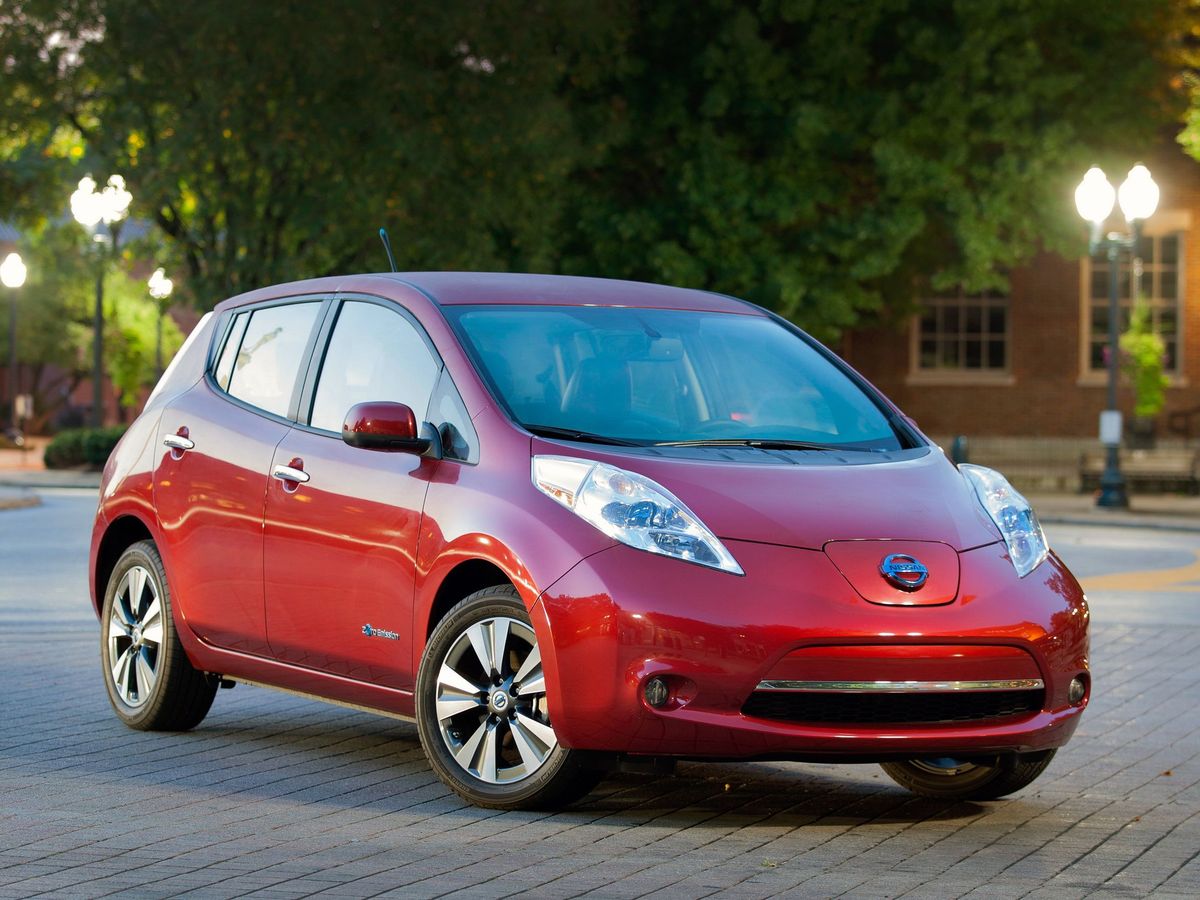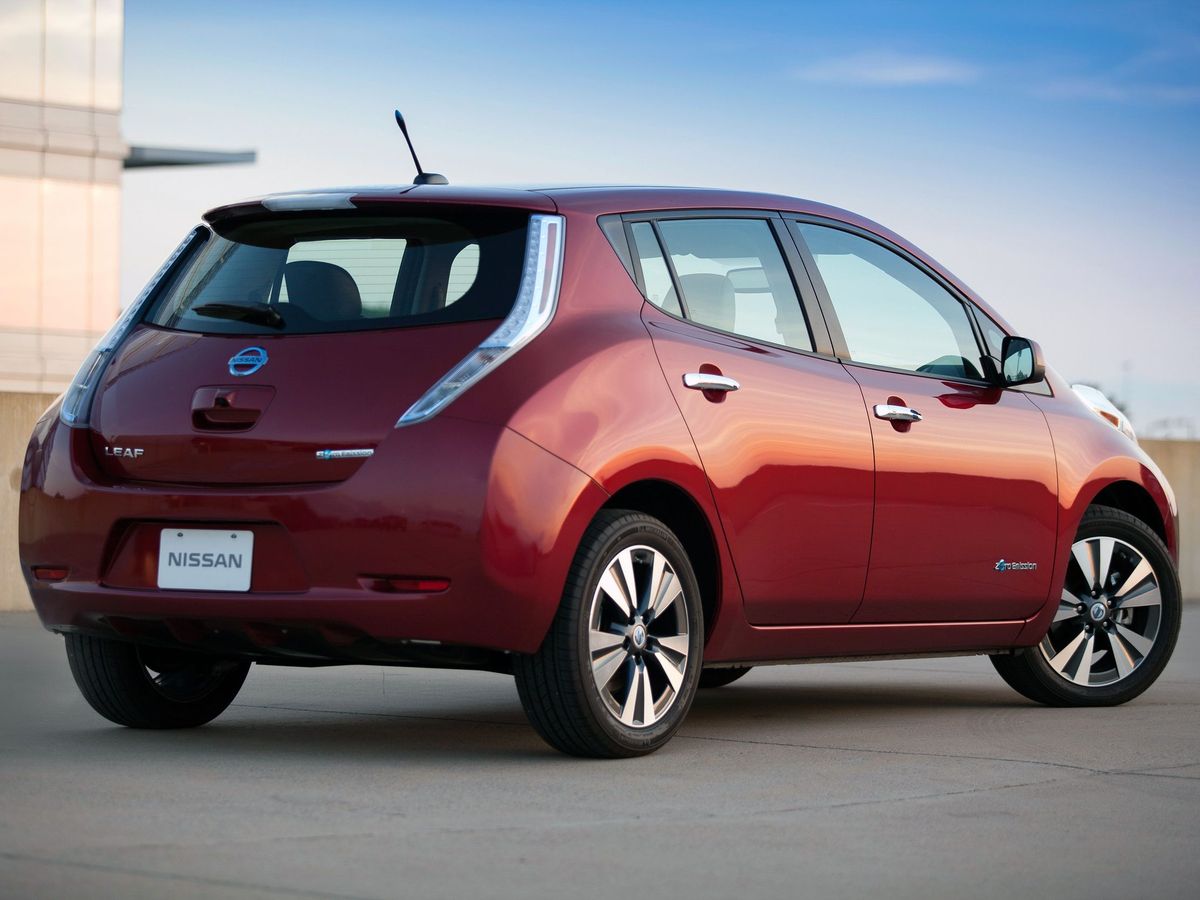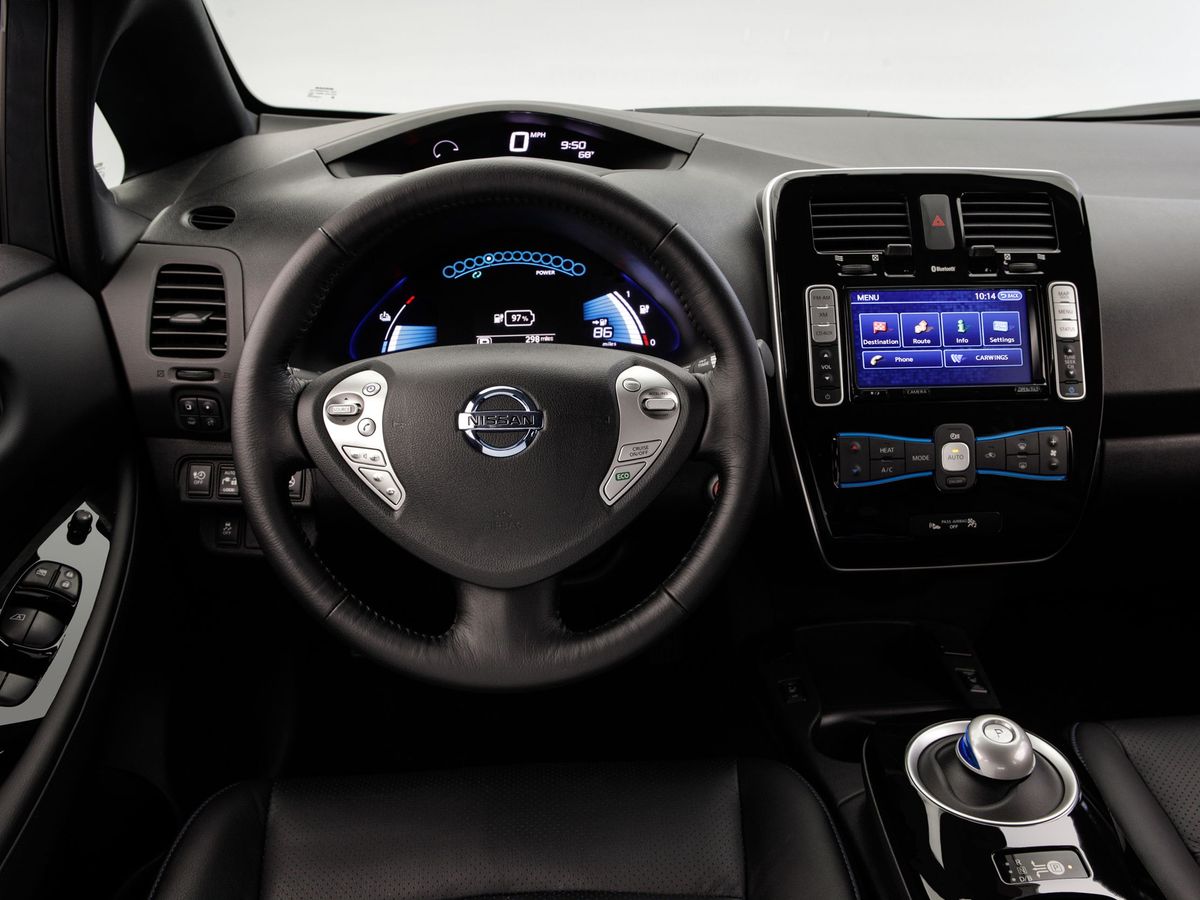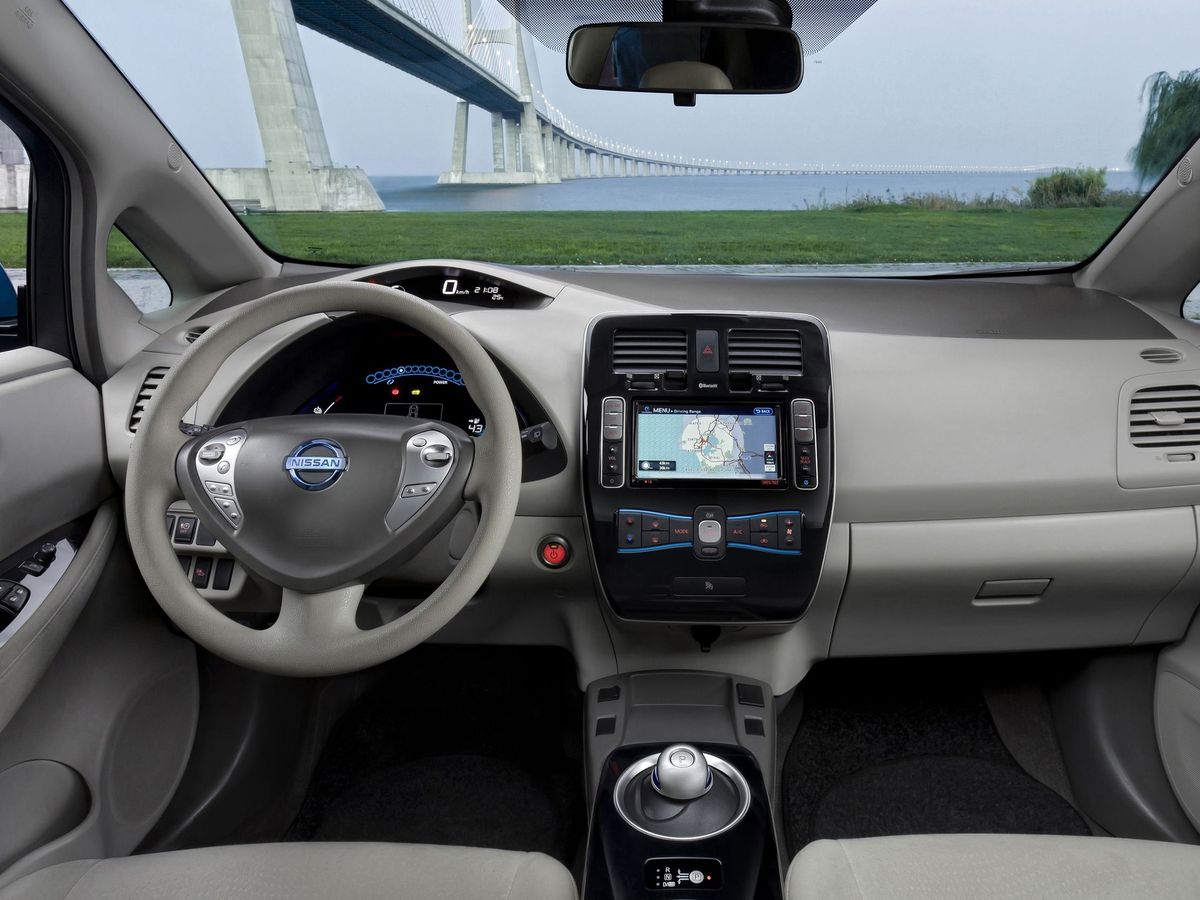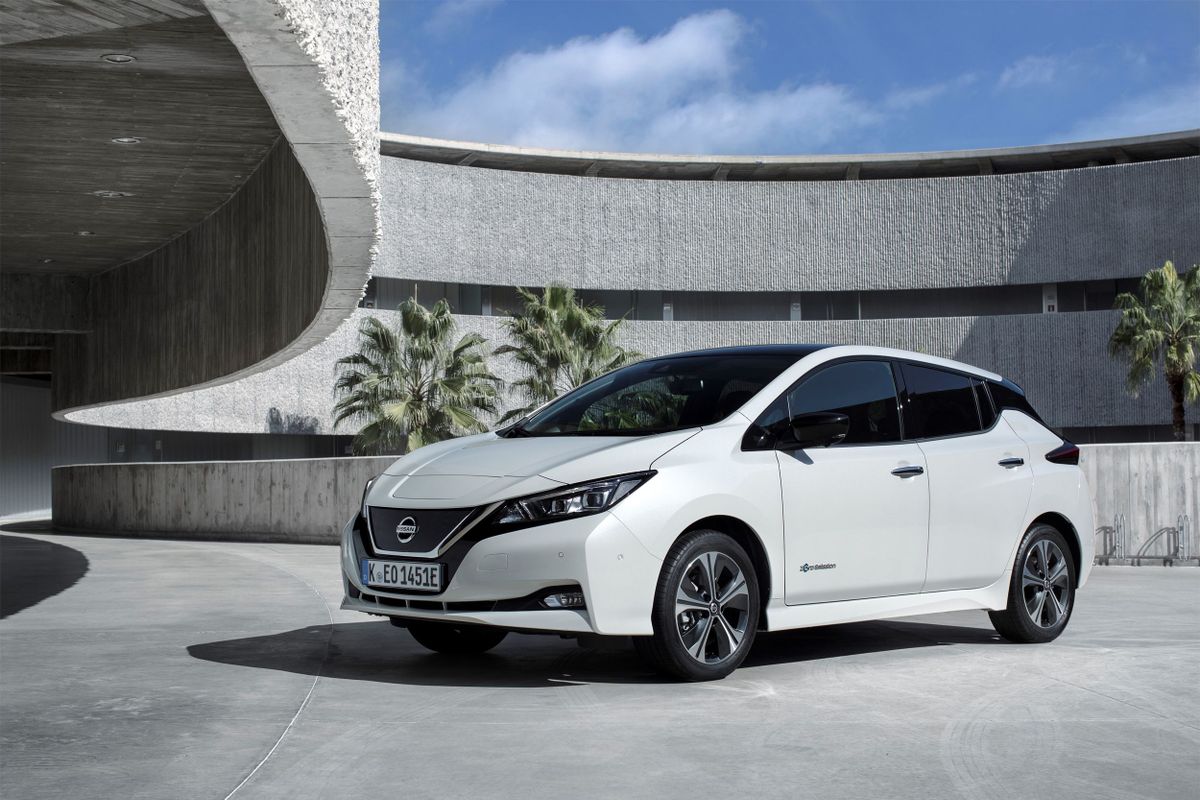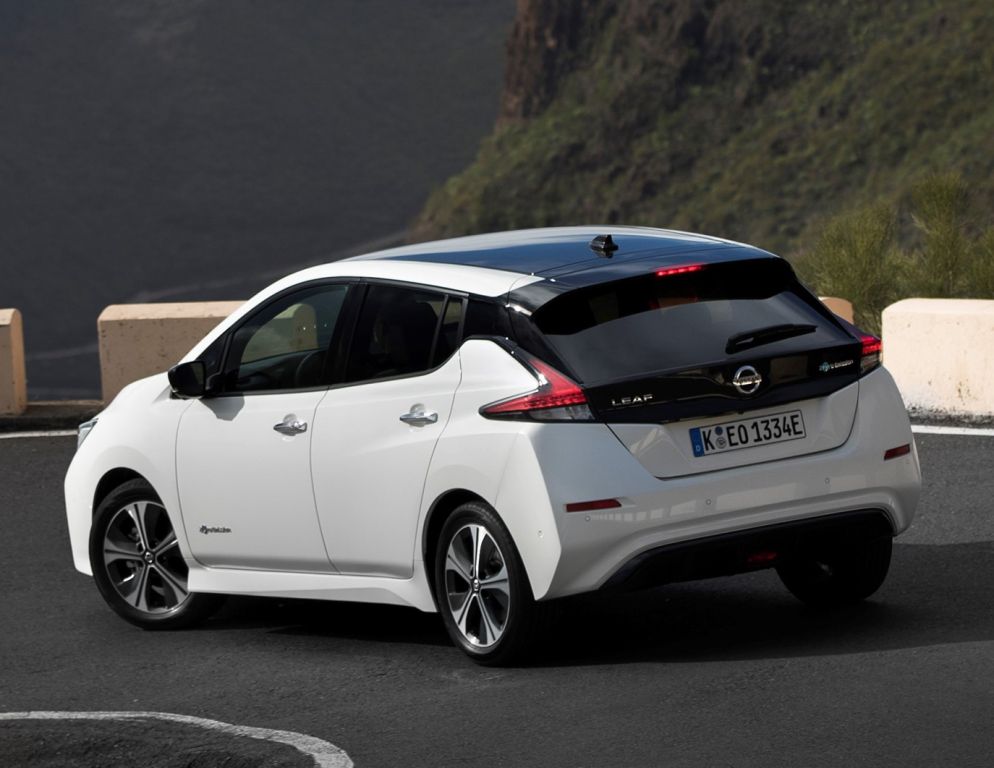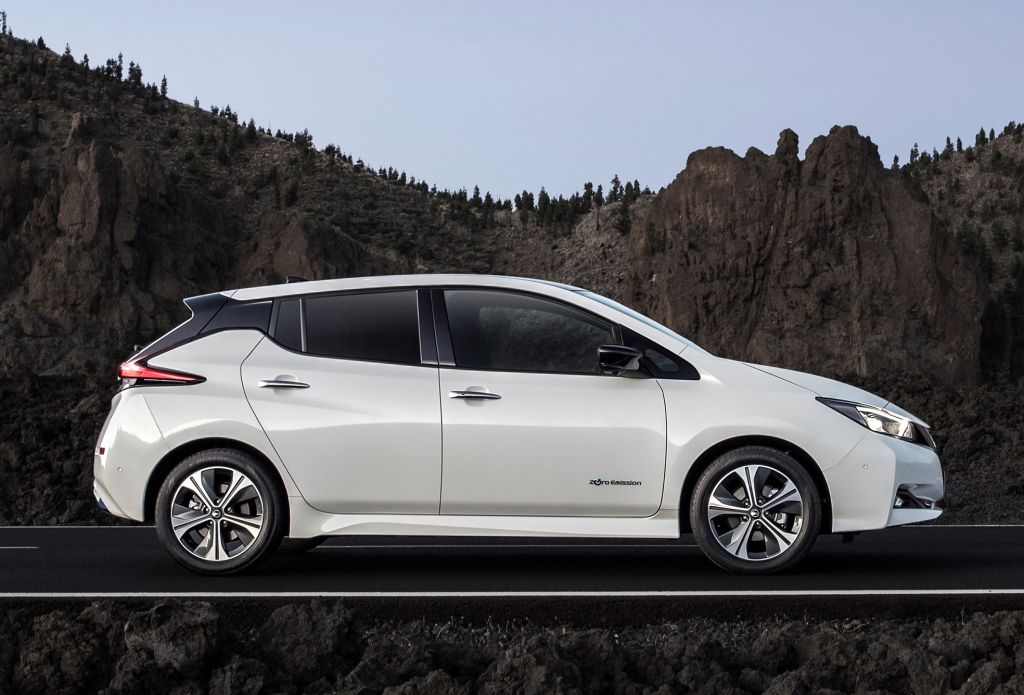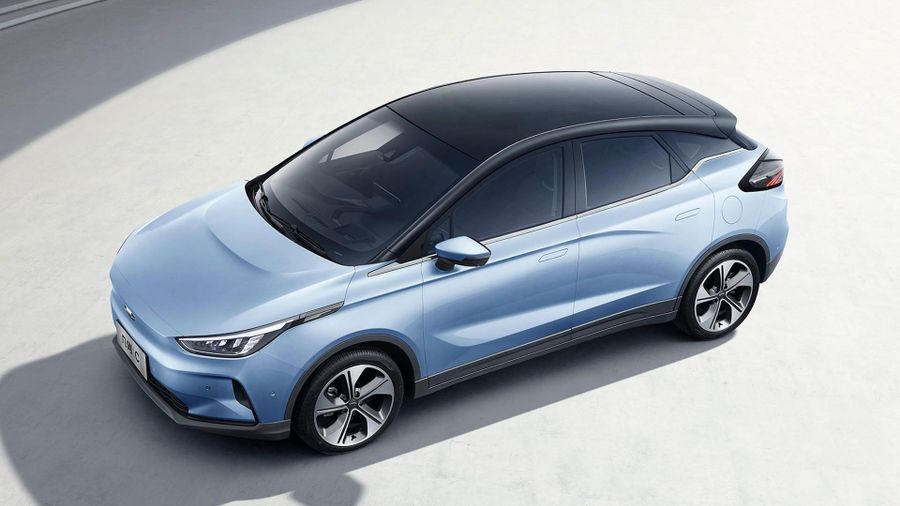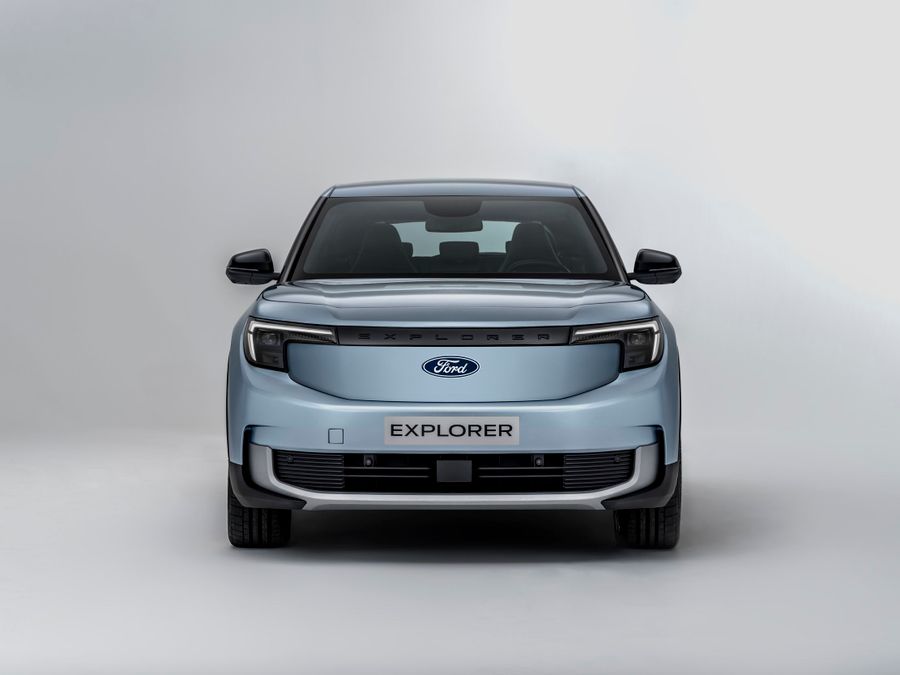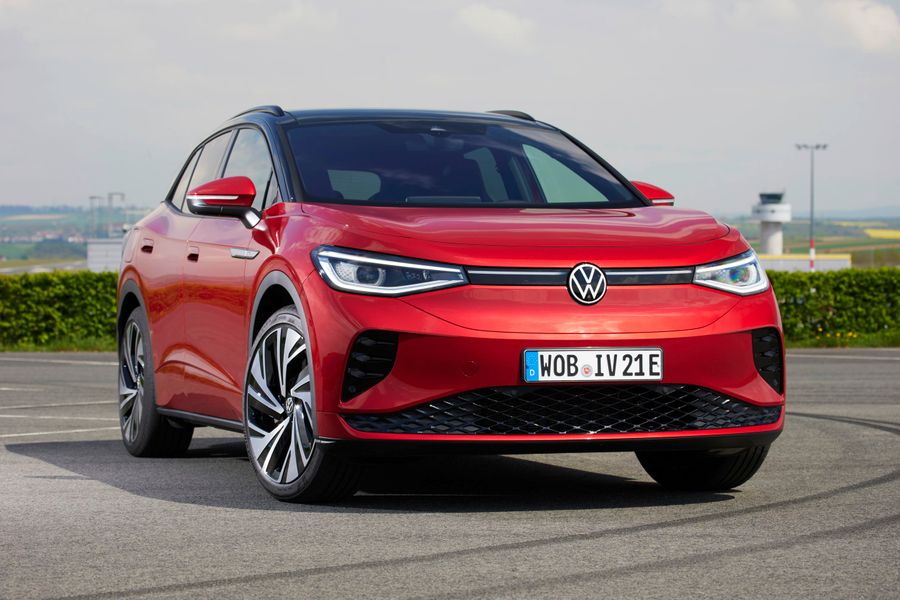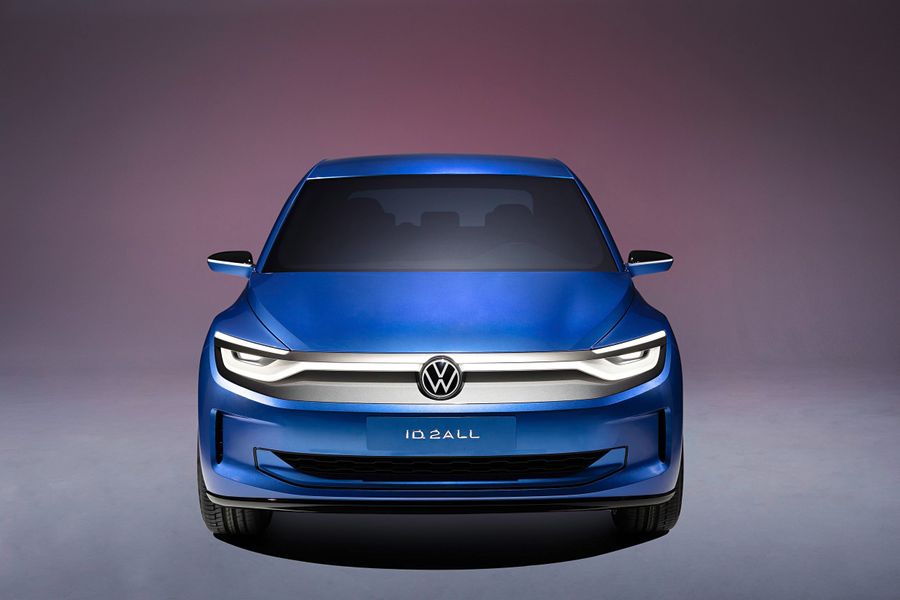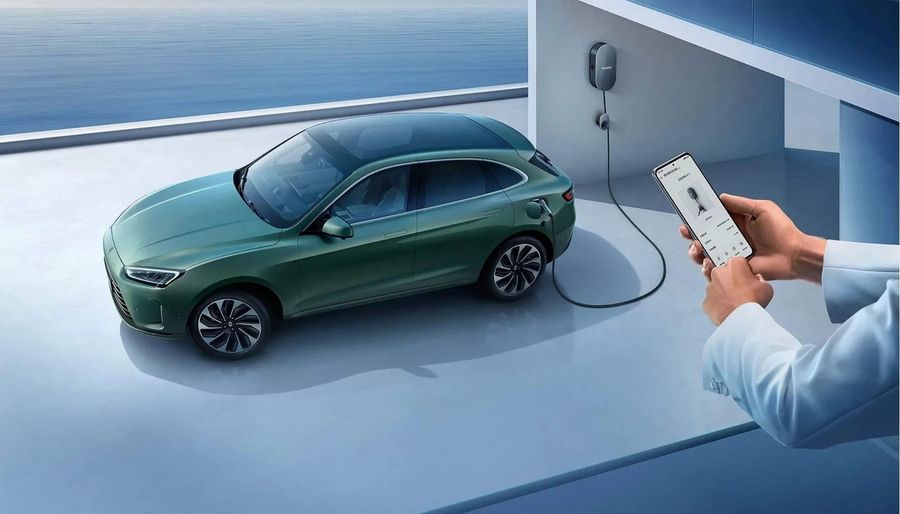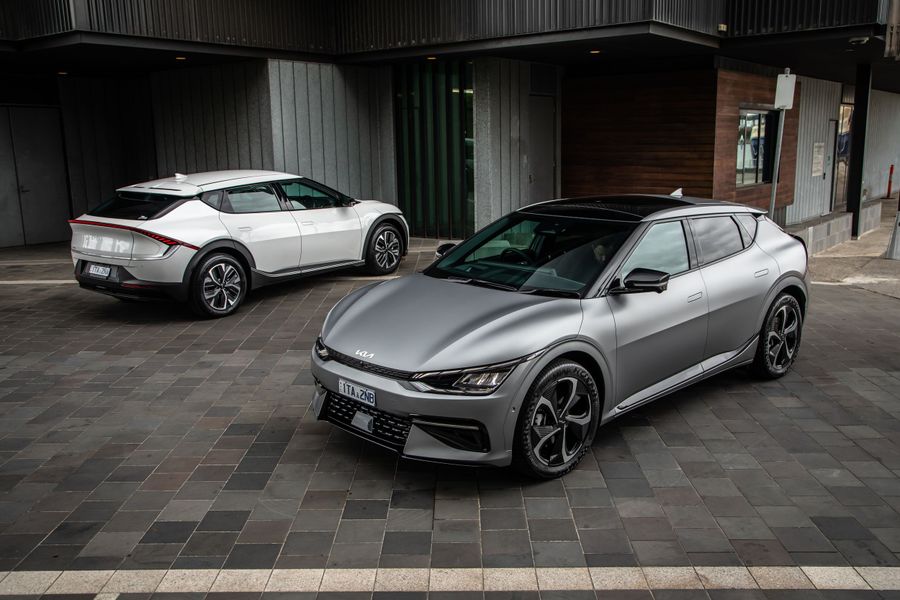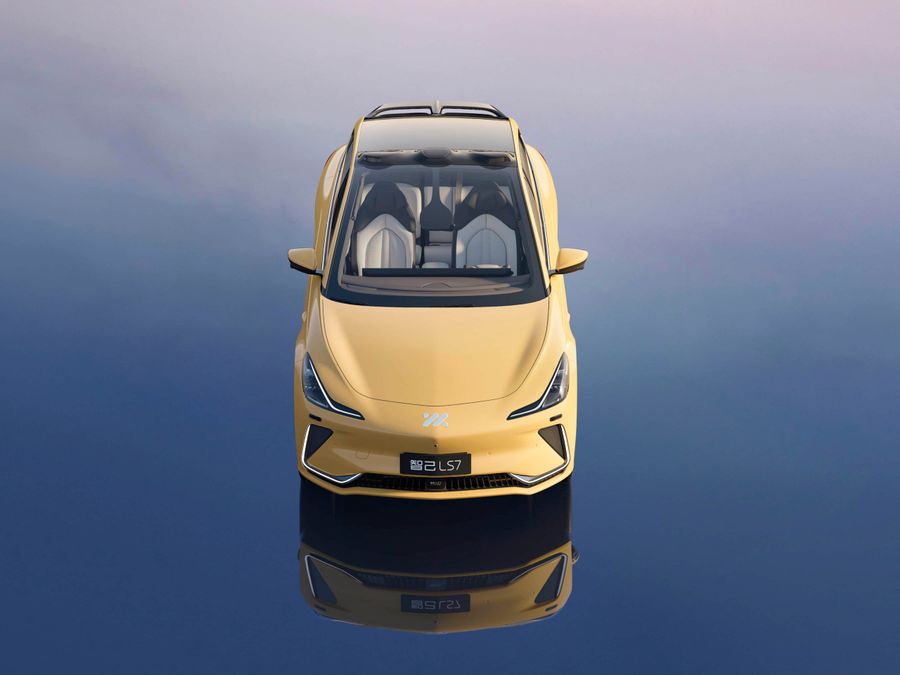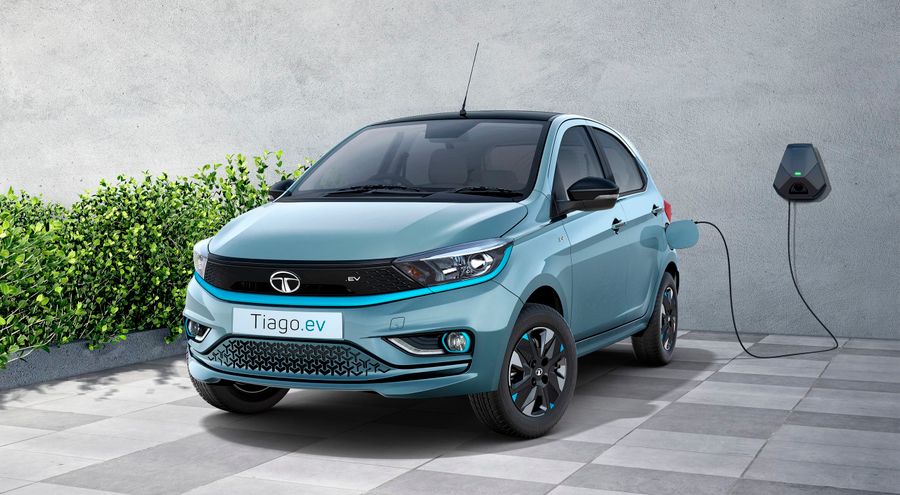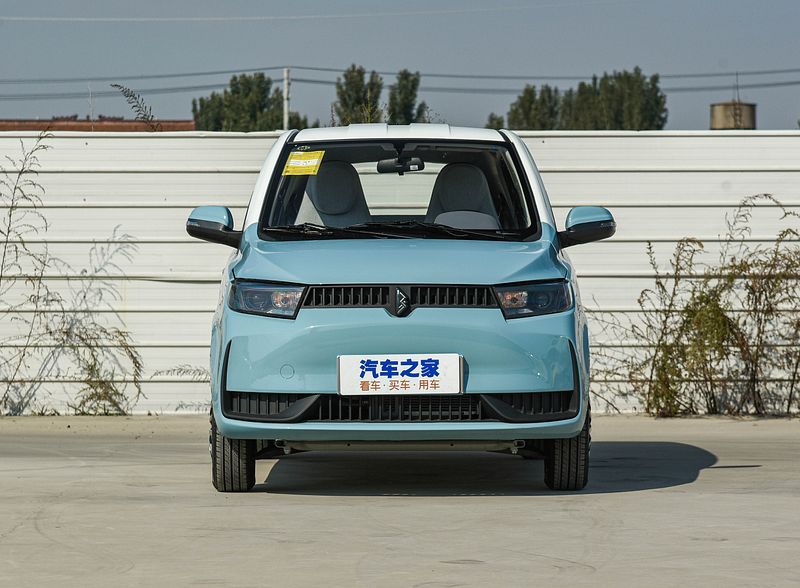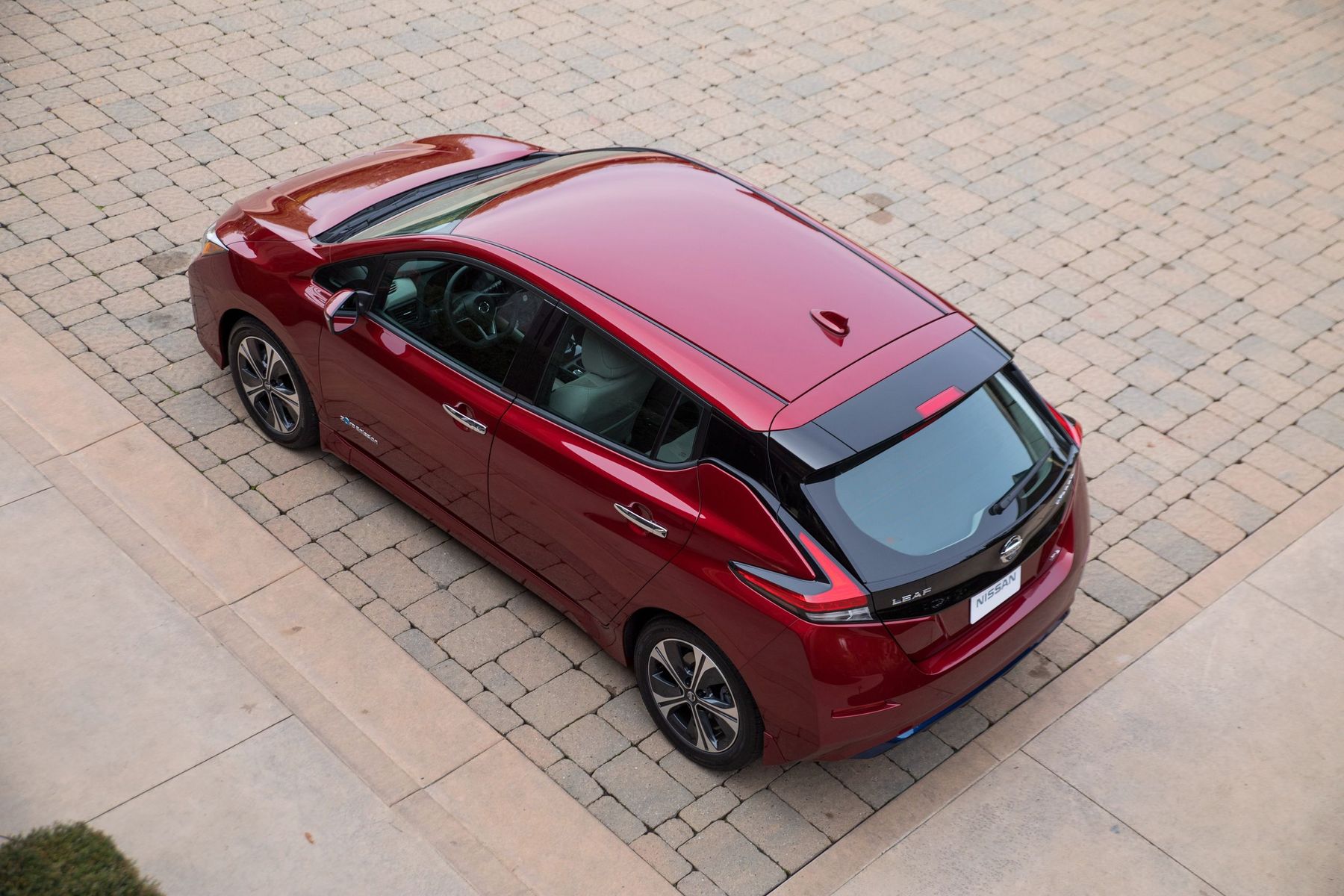
Nissan Leaf. The pioneer of electrification
The Nissan Leaf is the first truly mainstream electric vehicle, designed as a five-door hatchback. This model enjoys great popularity around the globe. In Japan, the vehicle became available in December 2010. A completely ordinary exterior (except perhaps the usual radiator grille that is missing) hides Nissan’s V platform, shared with the Juke SUV, and the all-new systems.
The first generation
It was produced from 2009 to 2017. The first Leaf was equipped with an electric motor that developed 80 kW and 280 Nm. It was powered by a 24 kWh lithium-ion battery, which weighted 300 kg and was located under the floor, making the center of gravity of a fairly high-rider hatchback low, which provided a good steering response. At low and medium speeds, the electric vehicle’s dynamics was comparable to cars with a 3-liter petrol engine. The maximum speed was 145 km/h. A fully charged battery lasted 200 km (on the very first Leafs), later the drive range was increased. There were two sockets for charging, namely an ordinary socket and a special connector. The battery was fully charged from a regular network in 8 hours. It took about 30 minutes to restore the capacity to 80% at a special fast charging station (480 V).
At the beginning of production, the Nissan Leaf was available in two trim levels: base X and top-end G. The standard equipment installed on all cars included a navigation system, electronic stability program, keyless entry, a rear spoiler, and 16-inch alloy wheels. The G version could be distinguished by the presence of a solar panel on the roof, a rear-view camera, cruise control, an audio system with six speakers instead of four, a contactless toll road system, and a curtain in the trunk compartment.
For the seven years, during which the first generation was produced, neither the exterior of the Nissan Leaf, nor its interior had changed. All the changes were directed at improving its power part by increasing the capacity of the batteries and engine output.
In November 2012, the manufacturer presented an upgraded version of the electric car. The powertrain was 30% smaller and 10 kg lighter. The curb weight decreased by 80 kg. The engine was reconfigured for more responsive operation and vigorous acceleration, the suspension was modified for a lighter body. The drive range increased to 228 km. The size of the trunk compartment increased by 40 liters (up to 370 liters), as the new charging mechanism became more compact and it was possible to place at the front.
In December 2015, another series of improvements took place. All versions acquired lane keep assist and emergency braking system. And most importantly, the buyers now could choose the battery capacity: apart from a 24 kW/h battery, a new 30 kW/h lithium-ion battery appeared. The new version had the drive range of up to 280 km. The warranty period of the 30 kW/h battery was declared by the manufacturer at 8 years or 160 thousand km, and the 24 kW/h battery was provided with a 5 years warranty or 100 thousand km. Nissan promised to repair or replace a battery that failed during this period at no additional charge. It is worth noting that used cars of the first generation fell significantly in their resale price, and the major reason for this was the significant deterioration of the battery.
The second generation
It has been produced from 2017 to the present (as of 2021). The new Nissan Leaf has tried on a rather aggressive design, fully consistent with the company’s corporate identity. However, only the hinged elements of the body have radically changed, whereas the rest of the body and its structure are the same. A new power unit is available to match the changed exterior: the 2017 hatchback has become noticeably more powerful than its predecessor. The second generation Nissan Leaf is 4,480-4,510 mm long, 1,790 mm wide and 1,540-1,550 mm high. Its wheelbase is 2,700 mm, which means that the hatchback has a fairly spacious interior. The trunk volume is 435 liters.
The interior of the 2017/2018 Nissan Leaf is somewhat conservative. Instead of two displays in front of the driver, there is one, while the center console smoothly flows into the tunnel between the seats, on which the transmission control unit is located. At the start of sales, the range included three trim levels: S, X and G. In 2018, the NISMO trim level appeared in Japan. This version has a more aggressive style, emphasized by the corresponding external styling, 18-inch wheels and ultra-low rolling resistance wheels, carbon trim in the interior and red accents. Other special designs are also available.
Both the exterior design and the interior of the new Nissan Leaf are made in compliance with the corporate style of the company. The exterior is aggressive, but the interior is peaceful. This trend is observed on all models of the Japanese brand.
The hatchback’s electric motor produces 110 kW and 320 Nm, and the battery capacity has increased from 30 to 40 kW/h. The new Nissan Leaf has acquired a new 150 hp engine (110 kW). Acceleration to 100 km/h occurs in 7.9 seconds, which is 15% faster compared to the previous generation, acceleration from 60 to 100 km/h is 30% faster. The battery is still lithium-ion, its dimensions remain the same, but the capacity has been significantly increased, reaching up to 40 kW/h. Accordingly, the drive range has also increased by about two times, up to 400 km (such indicators are shown by the car when measured according to the Japanese JC08 standard). The only downside is that it takes a little longer to charge the batteries. For example, fast charging up to 80% takes 40 minutes instead of 30.
In 2019, the manufacturer launched an even more powerful version e+ with a 62 kWh battery and an electric motor, generating 160 kW and 340 Nm. The new model has become faster: acceleration from 80 to 120 km/h has improved by 13%. The maximum speed has increased from 144 to 156 km/h. The drive range has increased to 570 km in JC08 mode.
The 2018/2019 Nissan Leaf hatchback is built on the same Nissan EV platform as its predecessor, with independent front suspension and semi-independent rear suspension. Chassis redesigns have made the car even more rigid on the move, and the new Leaf has a lower center of gravity. Safety is provided by the following systems: advanced cruise control (maintains the distance to the vehicle in front and automatically steers in the lane), smart automatic parking assistant, all-round visibility system and automatic headlights, as well as a full set of modern active traffic control systems that use steering, accelerator and brake functions. The lives of the driver and passengers are protected by six airbags. High voltage parts are insulated and shut off in the event of a collision.



